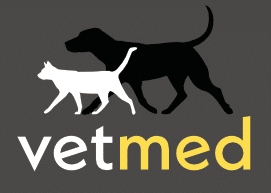One of our lovely clients came in recently with her little cat. She had noticed that her cat had been ‘out of sorts’ and did not want to be patted at all, sleeping more than usual and eating less. She noticed that he just didn’t seem very happy so thought to bring him in for a thorough check up. The consultation appointment revealed that her super cute British Blue had bleeding gums and was diagnosed having gingivitis. Gingivitis is a condition where the gums around the teeth become inflamed (red, swollen, and painful). This inflammation is usually the result of a process that begins with the build-up of plaque, a film that harbors bacteria on the teeth. If not regularly removed, plaque migrates deeper toward where the gingiva meets the base of the tooth. When plaque becomes hard, it is referred to as calculus or tartar. Gingivitis is not limited to cats either, dogs and we humans, are all in the same boat if we do not practice good dental hygiene. If gingivitis is not controlled, it will progress to periodontal disease, a condition that eventually cannot be reversed. This is where the tissues that attach the tooth to the underlying gums and bone are weakened. So, what was the prescribed treatment? In this instance a plan was made to have the pet in for day surgery. Dental radiographs under general anaesthetic were needed to assess the teeth. The anaesthetic also allows the vets to perform a thorough dental assessment to probe each tooth and evaluate the health of the gums. Dental Xrays allow the roots underneath the gums to be assessed for abnormal lesions (the feline equivalent of cavities). And the outcome? Radiographs revealed that despite the gingivitis the teeth themselves were healthy. The client was incredibly relieved to learn post surgery that no extractions were necessary. A thorough scale and polish of all the teeth was performed to remove any plaque and tartar, reduce the bacteria under the gumline to reduce gingivitis. It was testament to the client that she was well aware of the changes in her pet’s behaviour and her swift action to arrange a consultation with her vet. It could have well turned out quite differently. Preventative measures The best way to prevent dental disease is to reduce the rate at which plaque and tartar builds up. Today, due to advances in pet nutrition, we have seen the development of water additives and special diets that can reduce tartar accumulation.
- Regular dental cleaning by your veterinarian, usually every 6 months
- Daily home care through brushing (although not easy with cats!)
- Introduce a dental care diet
- Extraction of teeth in affected areas when needed
As pet owners we need to be vigilant, keeping a close eye on all members of our family. The take away from this particular situation above, is to act when you notice something isn’t quite right. And, that dental hygiene is critical to the health and well-being of your pet.
